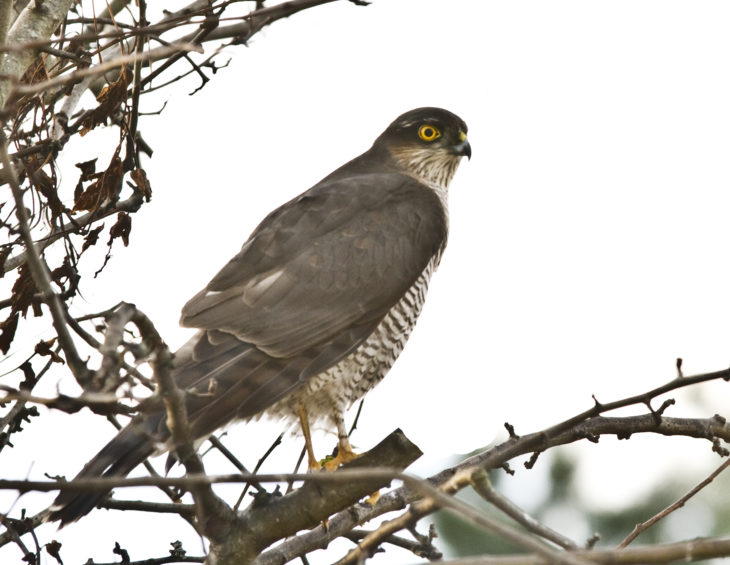Identifying sparrowhawks part 1
Earlier in the week, one of my volunteers contacted me to say they had found a dead sparrowhawk in their garden. The sparrowhawk is one of our most widespread and familiar birds of prey and they are the most common bird of prey to be found in your garden. Sparrowhawks are short-lived compared with other birds of prey, with birds only reaching around 4 years of age and more commonly, less than that. The oldest known recorded bird was 17 years old but this is very unusual.

About one-third of adult sparrowhawks die each year, with around two-thirds of fledged young dying in their first year. The main reasons for their mortality are the availability of food and the quality of parental care. The lack of food also affects their breeding success with only just over half of breeding birds producing young per season. A prolonged hard winter can cause a considerable drop in the adult population which has a knock-on effect for the subsequent breeding season.
When I went to take a look at the sparrowhawk, I discovered it was a juvenile bird. I was actually surprised at how small it was and after doing some research I found out that they are in fact smaller than kestrels. There are a few key identifying factors to look for when identifying sparrowhawks. They are a small, broad-winged raptor, showing a long tail, with long legs and appear small-headed.
The young birds have dark brown upperparts and barring on the underparts. The male is smaller (wingspan 58-65cm), with slate-grey upperparts and off-white underparts which show rufous barring (some males are more rufous than others). The female is larger (wingspan 68-77cm), with brownish upperparts and off-white underparts which show rufous barring but much-reduced compared to the male. Finally, she has a white line above the eye which is more prominent than in the male.
Laura Preston, Falls of Clyde Ranger
Help support our vital work and join us today!
Help protect Scotland’s wildlife
Our work to save Scotland’s wildlife is made possible thanks to the generosity of our members and supporters.
Join today from just £3 a month to help protect the species you love.
Preface
Earlier in the week, one of my volunteers contacted me to say they had found a dead sparrowhawk in their garden. The sparrowhawk is one of our most widespread and …
